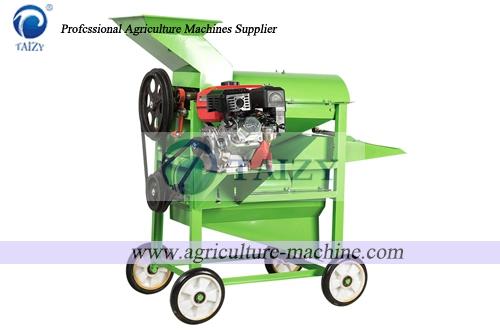Seed germination and external conditions: During the process of seedling, the seeds undergo great changes in physiological and biochemical metabolism. Knowing the germination of seeds can make our corn grow faster. The high yield of corn thresher depends on the previous efforts. Let’s take a look at it.
The change of the carbohydrate hydrated substance is that during the germination of the seed, the hydrolase is continuously increased, the activity is enhanced, the starch in the endosperm is hydrolyzed, and the soluble sugar is increased. Hydrolysis of starch into glucose is accomplished by two types of enzymes. The decomposition of starch into maltose is accomplished by amylase catalysis. The amylase decomposes the amylose, and the R enzyme combines to decompose the amylopectin. The hydrolysis from maltose to glucose is catalyzed by maltase.


The decomposition of proteins is mainly caused by the hydrolysis of proteins in the endosperm to various nitrogen acids by the action of proteases and peptidases when the seeds are germinated. Some of them are applied to the embryo to synthesize structural proteins, which become components of young shoots and young root cells; and a small part of chlorinated acid is decomposed into organic acids and ammonia, organic acids are further oxidized to form sugars, and ammonia can synthesize new amino acids. Form structural proteins for the needs of long leaves and long roots.
It can be seen from the above that the metabolism of corn seeds is very vigorous at the time of germination. In order to meet these energetic physiological and biochemical processes, corresponding agricultural techniques must be adopted for the demand of germination of corn seeds. The external conditions required for the germination of maize seeds are:
Moisture: Water swelling is the beginning of seed germination. When the seed absorbs water, its physiological function gradually starts to strengthen metabolism. Through a series of enzyme catalytic processes, nutrients in the endosperm are converted into soluble compounds for the growth of organs.
Oxygen: The metabolic activity of the seed germination process requires a large amount of oxygen. For example, oxygen is required to decompose a storage material into simple organic compounds; these organic compounds are redistributed in the seed and require oxygen; organic compounds transported to new organs require oxygen for synthesis. If the oxygen supply is insufficient, the germination process is blocked. Under the condition of hypoxia, the product of anaerobic respiration, alcohol, can poison the embryo, and the bacteria can easily multiply, so that the chance of infecting the bacteria is increased, and the mold is rotten.
Temperature: can be divided into suitable temperature and highest and lowest temperature. The highest and lowest temperatures are the upper and lower limits of seed germination. The optimum temperature for germination of corn seeds is 32–55 ° C, the highest temperature is 40–44 ° C, and the lowest temperature is 8–10 ° C.
Under the above three conditions, moisture is the premise of seed germination, temperature is the key, and oxygen is guaranteed.
